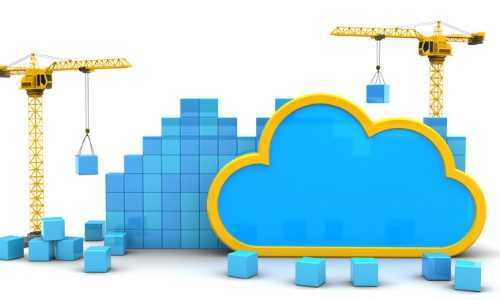6 Minute Read
June 12, 2018
0%

Despite recent improvements in technology adoption, many contractors today are still operating with outdated technologies and manual processes that make it next to impossible to get the complete data needed to successfully coach projects along in real-time. These inefficient processes make it harder to foresee long-term project health and guarantee on-time, on budget delivery. Often, contractors face an 11th-hour rush to catch up, correct mistakes and close projects out, which means more up-front costs and less profit.
So perhaps it's no surprise that the Viewpoint Network's latest Digital Transformation Survey Results show that the top two reasons why contractors moved their technology to the cloud came down to real-time access to data and reportings, and access to critical information outside the office. When asked about the overall benefits they gain, our users listed their top three:
1. Anytime, anywhere access
2. Better Security
3. Guaranteed to stay current on their software
But there are many other good reasons to pursue a cloud-based, all-in-one solution. Read on for 12 reasons why your construction organization should be considering digital tranformation sooner rather than later:

Moving to cloud-based software means you’re no longer tied to a physical workstation in back office in order to access, share or process project data. You’re consistently connected to your information, no matter if you last checked it on your desktop at the office, your smartphone on the jobsite or your tablet in a coffee shop or remote jobsite trailer. In our latest survey, this was the top reason for contractors making the change:
1. Employee access outside the office was the top result
2. Access to real-time data closely followed
3. And cloud-only features, like enhanced security, came in third
With integrated cloud software, your data lives in the cloud. If changes get made in the office, those changes are automatically updated for the users accessing features in the field, ensuring that your office and the field teams aren’t working off different sets of data. This means no more wasted time entering in information from a variety of manual processes and translating or rekeying data from one software program to another. Working from one set of data keeps all team members on the same page and reduces the chance for costly errors.
This ability to work in real-time translates into a boost in productivity. Questions get answered immediately. Bills get paid quicker. Information flows seamlessly. The ability to work in real-time, along with the significantly improved processing power of cloud-based software, means your office and the field enjoys a serious lift in project productivity, allowing for a powerful focus on work (and plenty more of it).
Enhanced productivity and performance were the top two unexpected benefits that customers acheived, according to our survey:
1. Enhanced productivity
2. Better performance
3. Access to cloud features they didn't expect to get
Having access to real-time information means the chances for mistakes and errors — from the back office to the field — are dramatically reduced. Spot problems as or before they occur and nip issues in the bud before they turn into major problems that require costly rework. And, when conflicts arise between crews, with subcontractors and vendors or external forces, being able to instantly access documents and workflows can be critical to resolving them quickly.
No construction firm ever wants to deal with a disaster, be it a fire, flood or on-premise server failure. With on-premise servers and software just one of these events can bring your company’s work grinding to a halt. Working on software based in the cloud ensures critical data lives in a secure environment protected by the latest security protocols and standards. And all safe from environmental risks. With regular data backups, your construction firm can keep business moving even when uncontrollable problems arise around you. Read why Beyer Group, Ltd. moved to the cloud after Hurricane Harvey.

With cloud vendors tasked with maintaining the most rigid security measures to protect data in the cloud, they are consistently watching and planning for the very latest security threats. In fact, this level of security protocol now far surpasses the levels most contractors are able to provide themselves with on-premise data storage. Using encrypted security and rich-access permission features, company data remains safely secure in the cloud, accessible only to the sources you want to have access to it. Viewpoint, for instance, is SOC-2 compliant and has brought in third-party cyber warfare defense experts to validate data security measures.
If you’re a construction IT professional, moving to a hosted cloud environment means you won’t have to fret about staying current software updates, data backups or dealing with time-sucking (and costly) server maintenance on your own. Most cloud-based software vendors take care of this for you. Your IT team can focus its resources on other critical business functions that help your bottom line instead of putting it all on pause.
With the cloud, you get the latest software features and updates the instant vendors deliver them. Simply log in and start using. This ensures you’re always working with the latest tools and functionality at your disposal. No more delays while you wait for updates to your workstation or download a new version for your mobile device.
With subscription licensing models and solution bundling options, cloud-based software gives you more flexibility with how your company rolls out and uses software. Determine whether users need full access and functionality or simply role-based licenses that allow access to relevant information they need — with pricing determined by role/use. And as your firm expands, simply change your subscription system to match the changes needed in your software.

When you figure in capital cost expenditures of hardware, maintenance, IT, additional software licensing and more, on-premise software solutions can result in up to four times as much in up-front costs as a cloud-based subscription model. When you add in savings gained from productivity spikes and reduced or redirected labor overhead, moving to the cloud becomes a significantly more cost-effective technology initiative for a construction firm.
As changes happen in technology, software and data delivery, cloud-based software provides a platform that allows you to better scale for your company’s future needs and adapt to the latest technologies. As technologies across the globe center around the cloud, future advancements will likely require cloud adoption in order to provide benefit to the end user. So, investing in the cloud today means you’ll be well positioned for tomorrow and beyond.
For years now contractors have struggled to attract and retain top talent, as younger generations spurn construction jobs in favor of technology careers. Leading-edge contractors have found that by implementing the latest cloud-based technologies they are faring better at attracting and training folks for construction careers. In turn, these younger professionals are forging new paths of innovation that are helping contractors realize even more productivity and profitability.
With businesses in virtually all industries moving to cloud and increasing demands by project owners that the contractors they use have modern, real-time data and collaboration abilities, time is running out for contractors that haven’t made the move to remain competitive.
Read more about the 5 Steps for a Perfect Cloud Implementation. Or, contact Viewpoint today to learn how you can get your company started in its own cloud transformation.
6 Minute Read
June 12, 2018
6 Minute Read
July 17, 2019
5 Minute Read5 Minute Read
June 7, 2018